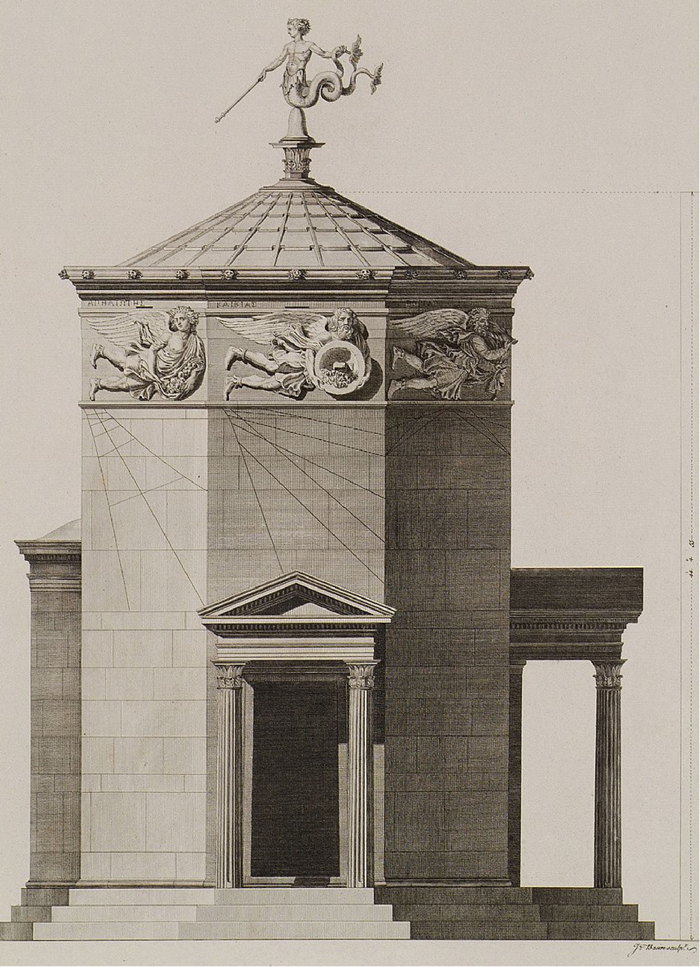Instrumentation: Violin and piano
Duration: 15:20
Commission: McKim Fund, Library of Congress
Premiere: 12/11/08
Verge Ensemble: Lina Bahn, violin and Lura Johnson
Coolidge Auditorium, Library of Congress
Washington, DC
Recorded on Innova 770 by violinist Hasse Borup and pianist Mary Kathleen Ernst.
Program Note:
Tower of the Eight Winds is named for the Tower of the Winds, still standing below the Acropolis in the ancient Roman agora in Athens. Built more than two thousand years ago, it had an advanced water clock inside, and its octagonal walls showed sundials and mechanical hour pointers so that one could tell the time from any location. In addition, there were eight friezes, one topping each wall, depicting the eight Greek deities of the wind. I chose this topic as my source of inspiration for several reasons. The focus on the multiple timing devices of the early structure fits both my own fascination with the movement of sound through time and the nature of the commission from the McKim Fund of the Library of Congress, for a concert honoring the 100th birthday of Elliott Carter, on December 11, 2008. Carter’s music focuses profoundly on temporal perception, and my choice honors that element, albeit realized in a different manner. In addition, it fits with my penchant for “ear twisters,” created by temporally displaced patterns of pitch groups that play against an underlying, constant pulse.
The four movements of the Tower of The Eight Winds are named for particular winds. The site ggweather.com/winds gave a vivid sense of the tremendous variety of wind types. I chose retroactively, according to the action and atmosphere of each movement. The wind names and definitions, attributed to The American Practical Navigator by Nathaniel Bowditch, were a rich source. I chose four. The first is Taku, a strong, gusty wind that occurs around Juneau, Alaska between October and March, and can attain hurricane force at the mouth of the Taku River, for which it is named. The second, Barber, is named for a wind that carries damp snow or sleet and spray that freezes instantly upon contact, for instance covering one’s hair with icicles. The third, Caver, is named for a gentle breeze in the Hebrides, while the fourth, Williwaw, is named after a sudden blast of wind that originates in the snow and ice fields of coastal mountains, and races down to the sea in places such as the Aleutian Islands and the Straights of Magellan. –JS
Press Quote:
“Of Thursday’s two world premieres and Friday’s two D.C. ones, Judith Shatin’s Tower of the Eight Winds, in four movements for violin and piano, stood out for its acuity and engaging vivacity as music one would like to hear again.”–The Washington Post
